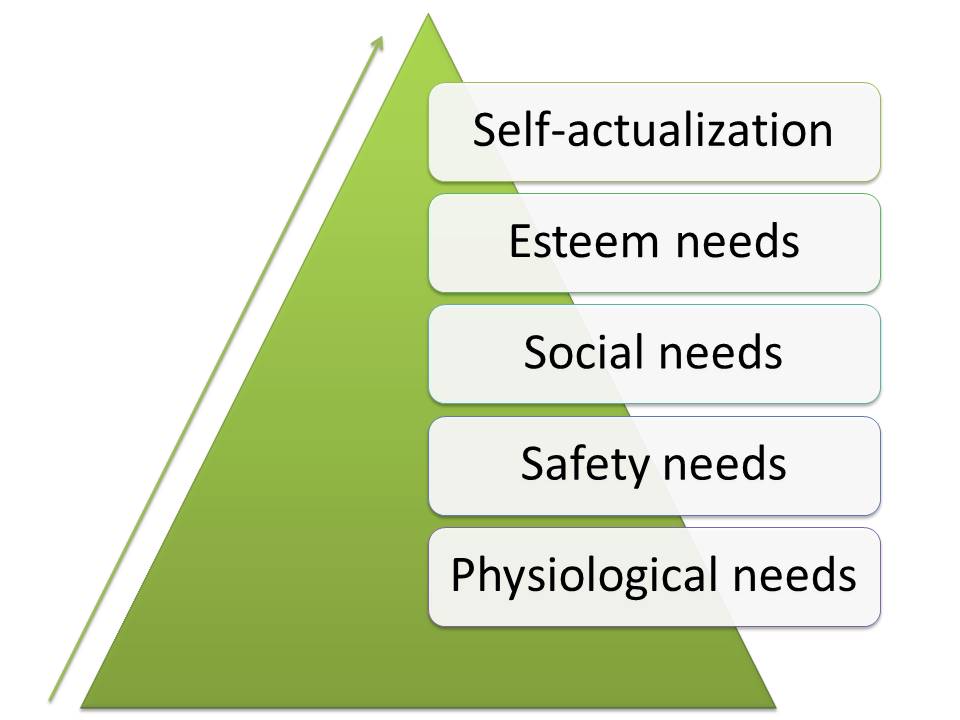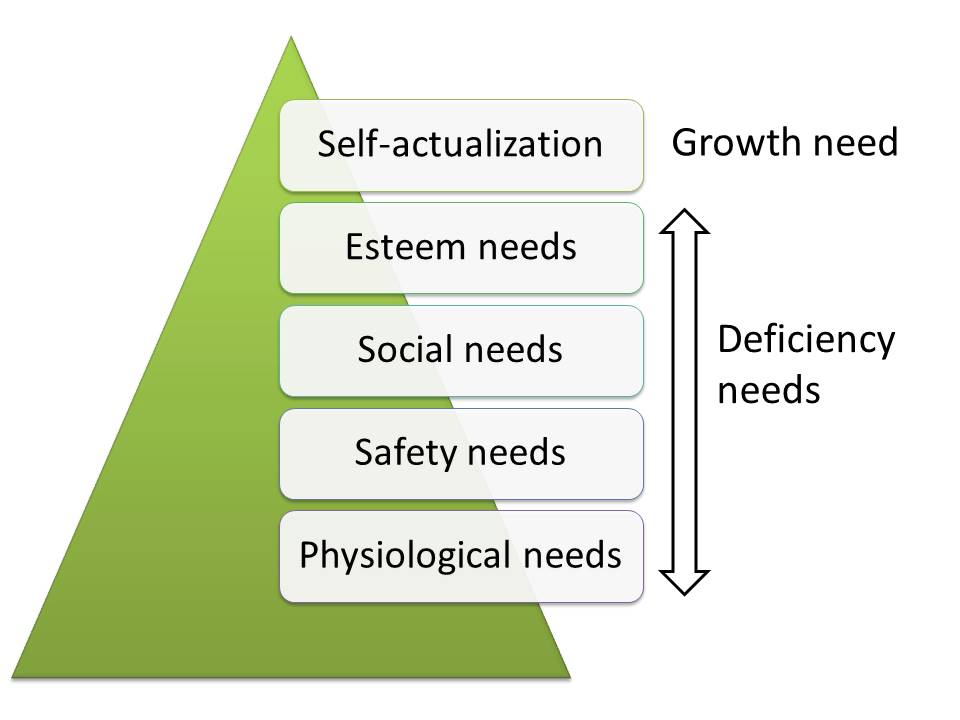Abraham Maslow, a humanistic psychologist, arranged the different types of needs in a hierarchy. Humanistic psychologists believed in humanism, an approach that assumed humans have inherently good qualities and potential for achieving greatness.
Maslow formulated his theory in the first half of the 20th century when psychodynamic and behaviouristic approaches dominated the field of psychology.
These approaches focused intensely on human behavior problems. The humanistic approach, on the other hand, gave people a break from these pathologies by focusing on positive growth.
Understanding the types of needs we have lies at the core of understanding human behavior. Maslow’s hierarchy of needs theory provided a framework that people could easily understand and relate to. That and the theory’s simplicity are perhaps the reasons why it’s still so popular.
Most people you know are probably vaguely familiar with it, and some may even have a decent idea what it’s about.
Types of needs in Maslow’s theory
Human behavior is motivated by different types of needs. What Maslow did was identify these needs and arrange them in a hierarchy. When the lower-level needs in the hierarchy are adequately satisfied by an individual, the higher-level needs emerge and the individual then tries to meet those needs.1

1. Physiological needs
These needs were placed by Maslow at the bottom of his hierarchy and are concerned with the basic needs of survival and reproduction. These needs include the needs of the body such as air, water, food, sleep, shelter, clothing, and sex.
Without many of these needs, the body falls sick or dies. If you don’t have air to breathe, water to drink, or food to eat, you cannot think about doing anything else.
2. Safety needs
When our survival needs are met, we try to make sure we’re in a safe environment. These safety needs range from physical safety, such as not living in a burning house, not meeting with an accident, etc. to emotional safety, such as not hanging out in environments that are toxic to our emotional health.
Furthermore, this level includes needs such as financial safety and family safety. If you don’t feel safe in your environment, you’ll find it difficult to concentrate on anything else (e.g. your studies).
Having lived in a politically disturbed area for the most part of my life, I have a first-hand experience of this. Your mind switches to alert mode. It makes you hyper-vigilant and motivates you to prioritize your safety by allocating your mental resources to the threat.
You become laser-focused on threat avoidance and find it hard to concentrate on anything else.
3. Social needs
Once your physiological and social needs are met, you can go about satisfying your social needs, such as the need for belongingness, love, care, and friendship. Human beings are social animals with social needs. It’s not enough for us to just live and be free from danger. We also want love and companionship.
4. Esteem needs
We don’t just want to belong and be loved by other people. We also want them to respect and admire us. These are external esteem needs that are met for us by other people. We want them to give us status, power, and recognition.
Another category of esteem needs is internal. We want ourselves to respect and admire us too. This is where self-esteem, self-respect, and self-confidence come in.
5. Self-actualization
When all other needs in the hierarchy are met, we aim for the highest need of them all- the need for self-actualization. A self-actualized individual is one who has become all they can be. They have reached their full potential in life.
Self-actualized people have a desire for growth and contentment. They constantly seek growth, knowledge, and creativity.
Self-actualization is a subjective concept, meaning it could mean one thing to person A and another to person B. Someone may become self-actualized by becoming the best musician, while another may find self-actualization in becoming a great parent.
Following are some of the key characteristics of self-actualized people:
- They’re reality-centered, meaning they’re able to distinguish truth from falsehood.
- They’re problem-centred, meaning they see problems as challenges that need to be overcome.
- They enjoy autonomy and prefer being the captain of their life’s ship.
- They resist enculturation, meaning they’re not influenced by their culture. They tend to be nonconformists.
- They have a non-hostile sense of humor. Their jokes are about themselves or the human condition. They don’t joke about others.
- They accept themselves and others as who they are.
- They have a freshness of appreciation, i.e., an ability to see ordinary things with wonder.
Deficiency and growth needs
Deficiency needs arise from a deficiency of something. Water deficiency makes you drink, food deficiency makes you eat, and a lack of safety forces you to take measures to be safer.
Similarly, a deficiency of love and belongingness motivates you to seek these things and a deficiency of admiration and self-esteem motivates you to gain admiration and build self-esteem.

On the contrary, the need for self-actualization is a growth need because it stems from a need to grow and not from a deficiency of something. Growth fuels more growth and self-actualized individuals find themselves unable to completely satisfy their need to be the best they can be. They’re always pushing the boundaries of what they think is possible for them.
Shortcomings of the theory
Maslow originally held that the lower-level needs must be satisfied for a higher-level need to emerge. However, we can think of many examples where this isn’t necessarily the case.
Many people in developing countries, even though they might be poor and starving, are able to fulfill their social needs. The stereotypical starving artist is another example of a self-actualized (the best artist he can be) person who can’t meet the basic need for food.
Maslow later modified his work and pointed out that the hierarchy is not rigid and that the order in which these needs are satisfied does not always follow the standard progression.2
Another problem with the theory that scholars have is that it’s difficult to test empirically. Self-actualization is a subjective concept that can’t be measured. Also, it’s difficult to measure how fulfilled a person feels at a level and at what point they begin to meet the next higher need.
Also, the theory does not take into account individual needs. It only talks about universal human needs that transcend cultures.3
Human needs are also shaped by their past experiences. Maslow’s hierarchy of needs theory doesn’t take that important factor into account.
Despite these limitations, Maslow’s theory is powerful and the fact that it resonates with so many people speaks volumes about its relevance.
Lower-level needs are more compelling
Maslow’s original theory held that the lower the need in the hierarchy, the more dominant that need is. That is, if several needs are active in a person, the lower needs will be the most compelling.
Of course, this does not mean that the person will always choose the lower-level need. It’s just that these needs will exert stronger pressure on the individual than other needs.
For instance, if a person is feeling hungry and also wants to socialize, the pressure of hunger will be greater than the pressure to socialize. They may end up eating or socializing or both (eating with other people).
When people are stressed, they tend to return to lower-level needs. This suggests that lower-level needs are the foundations on which higher-level needs rest.
Hierarchy of needs in the light of evolution
Maslow’s hierarchy of needs should be seen as a hierarchy of the strength of universal human needs. The lower-level needs are the strongest because they have a direct impact on our survival and reproduction. As we move up the pyramid, the needs tend to have a less and less direct influence on our survival and reproduction.
Maslow’s hierarchy of needs also reflects the evolution of human needs. We share physiological and safety needs with almost every other organism.
When you tap your feet near a cockroach, it runs to safety. It has survival and safety needs. But the cockroach probably doesn’t care about obtaining the admiration and respect of other cockroaches. Surely, it doesn’t seek to be the best cockroach it can be.
We share our social needs with other social mammals and even some of our esteem needs. Many mammals have dominance hierarchies where the dominant leaders are ‘respected’ so to speak. However, self-actualization seems to be a uniquely human need.
The brain regions that enable humans to self-actualize are likely the most recent products of human brain evolution.
The need for self-actualization enables some humans to forego lower-level needs such as eating. Evolution has rendered the human mind capable of deciding that playing the violin for the rest of one’s life is more important than eating or reproducing.
Other animals do not have the cognitive luxury of making such an advanced decision. In any case, the instances of people foregoing food and reproduction for self-actualization are rare. They’re famous precisely because they’re rare.
People remember that Newton never married or that Van Gogh lived in poverty his entire life because they are surprised by how some people can forego their lower-level needs for self-actualization.
At any rate, it’s more likely that humans who self-actualize enjoy great reproductive success indirectly because self-actualized individuals, by reaching their full potential, contribute to their society which pays them back. They also gain the respect and admiration of other people who enjoy hanging around them. This increases their likelihood of attracting a suitable mate.
Self-actualization, therefore, may be evolution’s greatest gift to the reproductive fitness of humans and, in some cases, its greatest curse.
Implications of Maslow’s theory on happiness
Nothing explains happiness better than Maslow’s hierarchy of needs. Happiness results from the fulfillment of needs. According to Maslow’s theory, a self-actualized person who has adequately satisfied all the lower-level needs should experience ultimate happiness.
The real world, however, is not ideal, and very few people achieve this state. According to Maslow himself, only 2% of the human population reaches that state.
The problem is that humans have limited time, energy, and resources, and we have too many needs to satisfy.
The result is that we cannot satisfy all our important needs in any given time frame. Show me an unhappy person, and I’ll show you a person who isn’t satisfying one or more levels of Maslow’s hierarchy of needs. They may be too stuck on one level while ignoring other levels.
What else can they do? Their time, energy, and resources are limited. So instead of trying to satisfy every need on the hierarchy, they focus on the most important levels.
A person following their passion for becoming the best fiction author is focused on self-actualization and spends a lot of time writing alone whilst ignoring financial safety and social needs.
Similarly, a person who’s broke avoids falling in love and focuses on making ends meet. ‘When hunger strikes, love goes out the window’, as they say.
Try satisfying all the levels at the same time and you risk not satisfying any of them adequately.
The only way out of this mess is to determine your most important needs and focus on satisfying them. You may attempt to satisfy other needs later.
As a rule of thumb, the more you take care of your lower-level needs, the more freedom and security you will have to gamble with love, recognition, and self-actualization. Remember Maslow’s hierarchy of needs when you invest your time, energy, and resources into different pursuits.
References
- Maslow, A. H. (1943). A theory of human motivation. Psychological review, 50(4), 370.
- Koltko-Rivera, M. E. (2006). Rediscovering the later version of Maslow’s hierarchy of needs: Self-transcendence and opportunities for theory, research, and unification. Review of general psychology, 10(4), 302-317.
- Tay, L., & Diener, E. (2011). Needs and subjective well-being around the world. Journal of personality and social psychology, 101(2), 354.
